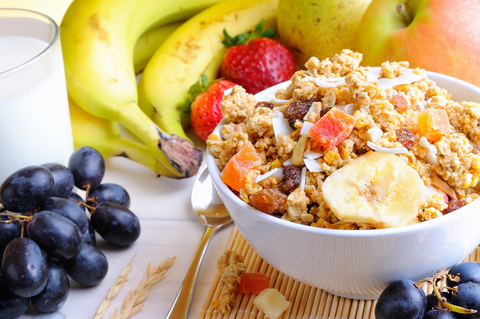Healthy Grocery Shopping Tips For Cereals
Healthy grocery shopping for Cereal: What used to be just a kid’s meal is now America’s favorite breakfast. And it makes sense. Cold cereal makes for a fast, easy, and inexpensive meal or a quick and easy snack.
Still, cereal sometimes gets a bad rap for being packed with sugar, low in protein, and generally lacking nutritional value. But the abundance of choices in the supermarket aisle means there are some healthy options hiding behind. While these cereals might not have a prize in the box, they’ll fuel you up to start your day off right.
A top choice is a cereal labeled 100 percent whole grain. At the very least, look for a cereal with a whole grain at the top of the ingredients list. Don’t rely on one that simply says “made with whole grains,” because that could be any amount—often, very little. Seals from the Whole Grains Council, which you’ll find on some cereals, can help you identify good sources of whole grains.
For money savings, look for store brand or “minor” brand cereals. The nutrition and quality are often just as good as national brands.
Look for a cereal that provides at least 5 grams of fiber per serving. Keep in mind that if you eat more than the serving listed, you will get more fiber (but also more calories, sodium and sugar).
Limit sugar to 8 grams per serving; 4 or 5 grams is even better. A little more sugar is okay for fruited cereals, especially if they are also good sources of fiber.
Although it shouldn’t be the priority for your picks, look for a cereal with at least 3 grams of protein per serving. Protein can help keep you full longer than eating carbohydrates alone (the milk you add provides some protein, too). Some cereals have 10 or more grams of protein per serving, rivaling the protein content of two medium-size eggs.
Note how much sodium is in your favorite cereals and search for similar cereals with less—preferably under 180 milligrams per serving (sodium can be as high as 400 milligrams per serving).
Check the fat content. Most cereals are low in fat, but some contain more than you may think, even unwanted saturated and trans fats from partially hydrogenated oils.
If you’re not used to or don’t care for high-fiber, whole-grain cereal, go half-and-half by mixing one with your favorite lower-fiber cereal. Another alternative: Health-food stores often sell cereals that mimic sugary mainstream cereals but are made with whole grains and have less sugar. These can even make for a healthful dessert.
Don’t forget to pick up milk. Choose low-fat or nonfat dairy milk. If you’ll be using a soy, almond or any other nondairy beverage, select one that is fortified with calcium and vitamin D and is unsweetened, or at least low in added sugar. This would be particularly important if your cereal is already bringing its own sugar to the bowl.
Be wary of cereals with added dried fruit, as the fruit is often sugar-coated. Though plump berries, pomegranates, and other pieces of fruit may be enticingly pictured on the package, the “fruit” inside may be nothing more than sugar-sweetened gobs of flour with flavoring, colorings and other additives.
For instance, you can find fake blueberries—sometimes called blueberry bits or crunchlets—in a number of cereals, muffins and breads. Some products contain no fruit at all. Others have a little fruit or fruit puree concentrate (mostly sugar) mixed with the fake fruit.
To avoid this marketing scam, check the ingredients. While fresh blueberries are packed with nutrition, “blueberry crunchlets” are not.
A better alternative is to buy a plain cereal and add your own raisins or fresh fruit (such as berries, peaches, bananas, grapes) at home.
And there you have it: Your guide to healthy grocery shopping and navigating the breakfast aisle with ease. Happy munching!
- Download your FREE gift “7 Easy Steps To A New Healthy You” from Ashvini’s website.
- Buy her book Small Steps to Slim here
- If you find yourself struggling and ready to take control of your life and your health, please contact Ashvini at 610-648-6260 or schedule a 30 minute complimentary consultation on her websiteor email her at ash@wellnessnutritionconcepts.com. Check out her nutrition tip video https://vimeo.com/110543525
Request a complimentary first session at Vertex Fitness, Voted the BEST Personal Training Studio on the Main Line
Click HERE and we will schedule a session to try it yourself








Leave a Comment